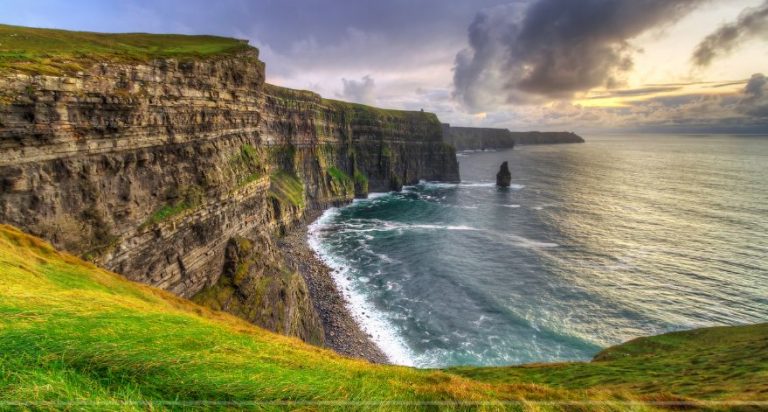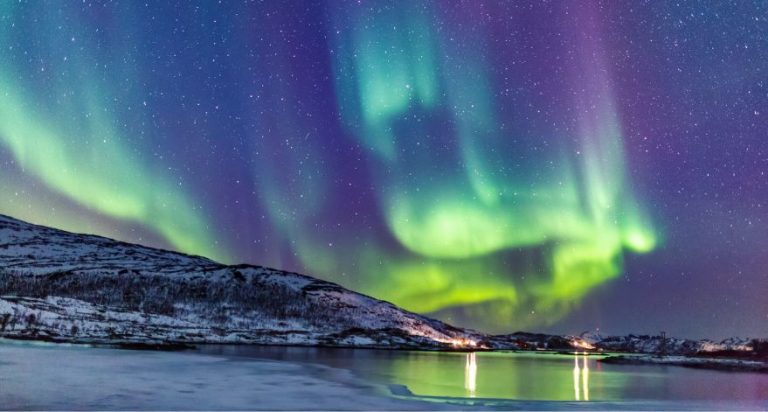Discover Ireland: 10 Facts That Will Amaze You
Emerald Isle Secrets
Ireland is a country filled with rich history, vibrant culture and breathtaking landscapes. From its unique traditions to its stunning natural wonders, Ireland never ceases to amaze.
10 Surprising Facts About Ireland
1. Hop-On Hop-Off Bus Tours
In major cities like Dublin, hop-on hop-off bus tours are a popular and convenient way to explore the city’s many attractions. These tours allow you to get on and off the bus at various stops, making it easy to visit famous landmarks such as Trinity College, where you can see the illuminated manuscript known as the Book of Kells, and the Guinness Storehouse, where you can learn about the history and brewing process of Ireland’s most famous beer.
The buses run on a loop, so you can spend as much time as you like at each stop and then hop back on to continue your tour. These tours are perfect for first-time visitors who want to see as much of the city as possible without the hassle of navigating public transportation. They’re also a great way to learn about the city’s history and culture, as most tours include live commentary or recorded audio guides.
2. Ireland’s Flag Has a Special Meaning
The Irish flag, known as the tricolor, is much more than just a national symbol—it carries a profound meaning rooted in the country's history. The flag features three vertical stripes: green, white and orange. The green represents the Irish Catholics and nationalists who have long sought independence from British rule. The orange symbolizes the Irish Protestants, particularly those who supported the union with Britain.
The white stripe in the center signifies the hope for peace and unity between these two groups. This symbolism reflects Ireland’s turbulent history, particularly during the Troubles, a conflict that affected Northern Ireland from the late 1960s until the 1998 Good Friday Agreement. The flag serves as a reminder of the ongoing journey toward reconciliation and harmony in Ireland.
3. No Snakes in Ireland
One of the most well-known legends about Ireland is that St. Patrick, the patron saint of Ireland, drove all the snakes out of the country. While this makes for a compelling story, the truth is that Ireland never had snakes to begin with. After the last Ice Age, Ireland became an island, isolated from the European mainland.
This geographical separation, combined with the country’s cool and damp climate, meant that snakes—cold-blooded reptiles that thrive in warmer environments—couldn’t survive there. As a result, Ireland is one of the few places on earth where you won’t find any snakes, making it a haven for those who fear these slithery creatures.
4. Ireland Has Its Own Language
While English is the primary language spoken in Ireland today, the country has its own ancient language known as Irish or Gaelic. This Celtic language has been spoken in Ireland for over a thousand years and is a vital part of the country's cultural heritage. Although the number of native Irish speakers has declined over the years, efforts to preserve and promote the language are ongoing.
In certain regions, known as the Gaeltacht areas—primarily located in the west of Ireland—Irish is still spoken daily by the local population. The language is also taught in schools, used in official documents and can be seen on road signs throughout the country. Irish holds a special place in the hearts of many, symbolizing the resilience of Ireland’s cultural identity.
5. The Oldest Pub in the World
Ireland is renowned for its lively pub culture, and it’s no surprise that the country is home to the oldest pub in the world. Sean’s Bar, located in the town of Athlone, dates back to 900 AD, making it over a thousand years old. This ancient pub has been serving drinks and providing a gathering place for locals and travelers alike for centuries. When you step into Sean’s Bar, you’re not just walking into a pub—you’re stepping into a piece of living history. The walls are lined with artifacts and memorabilia, and the floors are made of sawdust, just as they were in the past. Whether you’re sipping on a pint of Guinness or enjoying a traditional Irish meal, visiting Sean’s Bar is like taking a journey back in time to experience the rich heritage of Ireland’s pub culture.
6. Land of Castles
Ireland is often called the "Land of Castles" due to the sheer number of these historic structures scattered across the country. With over 30,000 castles and castle ruins, Ireland is a treasure trove for history enthusiasts and travelers alike. These castles, which range from grand fortresses to crumbling towers, tell the story of Ireland’s medieval past.
Some of the most famous include Blarney Castle, where visitors flock to kiss the Blarney Stone in hopes of gaining the gift of eloquence, and Dublin Castle, which has played a central role in Ireland’s history from its construction in the 13th century to the present day. Many of these castles are open to the public, offering tours that allow you to explore their ancient halls, towers and dungeons. Visiting these castles provides a glimpse into the lives of the nobles and warriors who once lived there, and each one has its own unique story to tell.
7. Home of Halloween
Halloween, celebrated around the world on October 31st, has its origins in Ireland. The holiday traces back to the ancient Celtic festival of Samhain, which marked the end of the harvest season and the beginning of winter—a time when the Celts believed the boundary between the living and the dead was at its thinnest. To protect themselves from wandering spirits, people would light bonfires and wear costumes to disguise themselves.
Over time, these ancient traditions evolved into the modern-day Halloween, complete with trick-or-treating, jack-o’-lanterns and haunted houses. Knowing that Halloween originated in Ireland adds a special significance to the holiday, especially when you celebrate it in its country of origin, where old traditions still influence how the holiday is observed today.
8. The Cliffs of Moher
The Cliffs of Moher are one of Ireland’s most iconic natural landmarks, attracting visitors from all over the world. These awe-inspiring cliffs rise over 700 feet above the Atlantic Ocean on the west coast of Ireland, offering some of the most breathtaking views in the country. On a clear day, you can see the Aran Islands and even the hills of Connemara across the water.
The cliffs are not only a visual spectacle but also a haven for wildlife, home to over 20 species of seabirds, including puffins, razorbills and kittiwakes. The Cliffs of Moher are part of a UNESCO Global Geopark, recognized for their unique geological features and the biodiversity they support. A visit to the Cliffs of Moher is an unforgettable experience, offering a chance to connect with Ireland’s natural beauty and observe its diverse wildlife in a stunning setting.
9. Ireland Loves Literature
Ireland has a rich literary tradition and is home to some of the world’s most celebrated writers. Dublin, the capital city, was named a UNESCO City of Literature in 2010, a testament to its profound influence on the world of literature. Ireland has produced a number of Nobel Prize-winning authors, including W.B. Yeats, Samuel Beckett and Seamus Heaney.
James Joyce, another of Ireland’s literary giants, penned the modernist classic Ulysses, which is considered one of the most important works of 20th-century literature. The country’s love for storytelling extends beyond books; Ireland is also known for its oral traditions, with folk tales, myths and legends passed down through generations. The influence of Irish literature is felt worldwide, and the country continues to inspire writers and readers alike with its rich cultural heritage.
10. Saint Patrick’s Day
Saint Patrick’s Day, celebrated on March 17th, is Ireland’s national holiday and one of the most widely recognized celebrations in the world. The day honors Saint Patrick, the patron saint of Ireland, who is credited with bringing Christianity to the country in the 5th century. Saint Patrick’s Day is marked by parades, festivals and the wearing of green—symbolizing the shamrock, which Saint Patrick used to explain the concept of the Holy Trinity.
The day is also a celebration of Irish culture, with traditional music, dance and food taking center stage. In Ireland, as well as in Irish communities around the globe, Saint Patrick’s Day is a time to celebrate Irish heritage, whether by attending a parade, enjoying a pint of Guinness or simply wearing something green.
Make Ireland Your Next Adventure
Ireland is a country full of wonders, from its historic castles and ancient traditions to its stunning landscapes and vibrant culture. Each of these surprising facts offers a glimpse into what makes Ireland such a unique and enchanting place. Whether you’re planning a trip or just dreaming of visiting, Ireland’s charm and beauty are sure to captivate you.
Read on to learn about some surprising facts about Italy.


